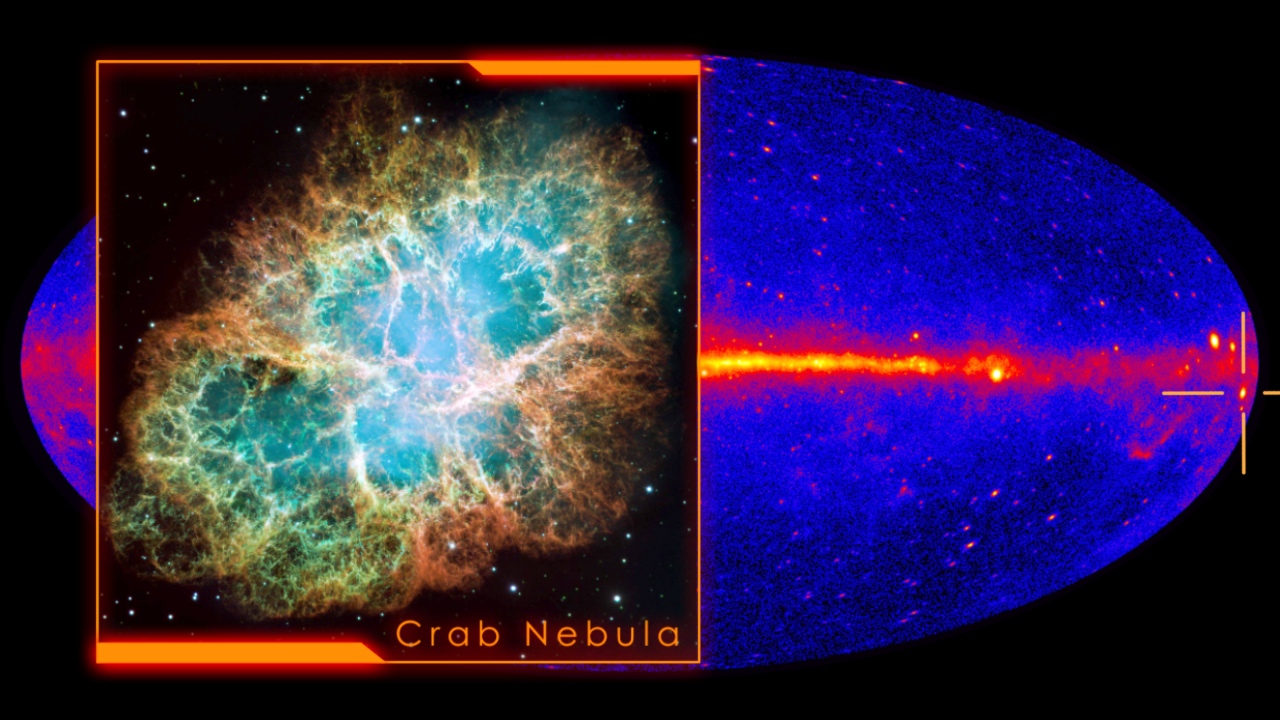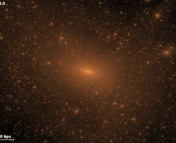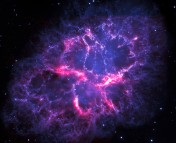
Figure 1: Hubble visible light image of the Crab Nebula inset in the gamma-ray sky. The Crab Nebula in the gamma-ray sky is marked by crosshairs on the right. Image credit: NASA.
- Title: The Variable Crab Nebula
- Authors: Marco Tavani
- First Author’s Institution: INAF-IASF-Rome and University of Tor Vergata, Rome (Italy)
Introduction
Recently Tanmoy gave a great introduction to the Crab Nebula, a high-energy source powered by the relativistic wind emitted by the pulsar at its center. Both the nebula and the pulsar emit radiation across the spectrum, from radio to gamma rays. Despite the variety of physical processes that drive this radiation, spatially averaging over the inner region of the Crab Nebula results in a flux that has been considered largely stable. As a result, the Crab Nebula has long been deemed a standard candle in astrophysics and is used to calibrate high-energy astrophysical instruments.
But the Crab Nebula’s had us all fooled — it turns out it’s not very constant at all.
The Observations
What we didn’t realize is that the Crab Nebula actually exhibits extremely high-energy flaring events roughly once or twice a year. This paper gives an overview of four recent flares, occurring in the period between mid-2007 and mid-2011. The flares are summarized in Table 1.
The first flare to draw real attention was the September 2010 event. During routine monitoring by AGILE, an Italian X-ray and gamma-ray satellite, a strong gamma-ray flare was observed with an extremely fast rise time and a peak flux significantly higher than the Crab Nebula’s usual flux. This was followed up and verified within a day by Fermi, another gamma-ray-observatory.
Although this flare was unique due to its fast rise time and variability, it wasn’t entirely unprecedented — analysis of previous AGILE and Fermi data show that there have been at least two previous flares since mid-2007: one in October 2007 and one in February 2009. Both lasted significantly longer (roughly two weeks), but also had extremely high energy outputs.
The most recent Crab Nebula flare occurred in April of this year, and has been categorized as a “super-flare” with the gamma-ray flux reaching levels 30 times higher than the normal flux level! For a few days, the Crab Nebula became the brightest source in the GeV gamma-ray sky.

Table 1: Major gamma-ray flares of the Crab Nebula. (*Note: peak fluxes are obtained using different integration times for each flare.) Table 1 in the paper.
Theoretical Implications
Since the September 2010 flare event, theorists have scrambled to make sense of this activity. These flares have each had total gamma-ray energy outputs of and appear to be the result of electrons accelerated up to enormous energies (
) very quickly — but where and how is this acceleration occurring?
The pulsar has been ruled out as a direct source of the radiation, since there was no observed change in the pulsed emission, only in the steady emission. Theorists have determined, due to the rapid variability of the radiation, that the area of origin must be fairly small and within the inner Crab Nebula. An area can vary only as quickly as information can travel across it (limited by the speed of light), and therefore a large area could not communicate across itself quickly enough to produce the rate of variability observed. There are several knots and shocks which could potentially be the particle acceleration site, however, and the author cautions that high-resolution optical and X-ray observations of the inner Nebula are necessary to address this issue.
The means by which particles could be accelerated up to the energies observed remains even more of a mystery. Expectations from magnetohydrodynamical models set a theoretical upper limit to the radiation energy possible via particle acceleration — but this limit is exceeded by the observed energies in the Crab Nebula flares. Two possible ways of bumping up the limit are discussed in this paper: (1) the radiation could be emitted by relativistic particles and directed towards us, resulting in high Doppler boosts to the energy, or (2) poorly-understood phenomena such as magnetic field reconnection or plasma instabilities — which allow for a tweak in the equations governing the acceleration, resulting in a higher possible energy limit — could play a role.
Conclusion
The author argues that however one looks at it, these recent Crab Nebula flares challenge our understanding of particle acceleration and emission. And having an awareness of these flares is certainly necessary if we’re going to continue to use the Crab Nebula as a calibration object for our high-energy instruments!





Trackbacks/Pingbacks